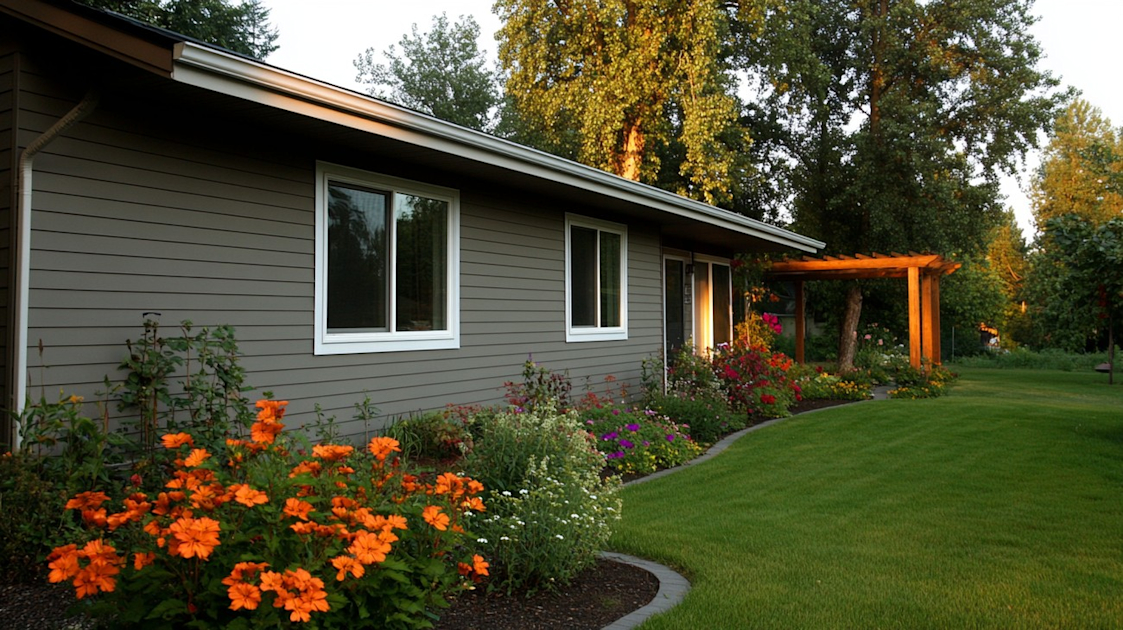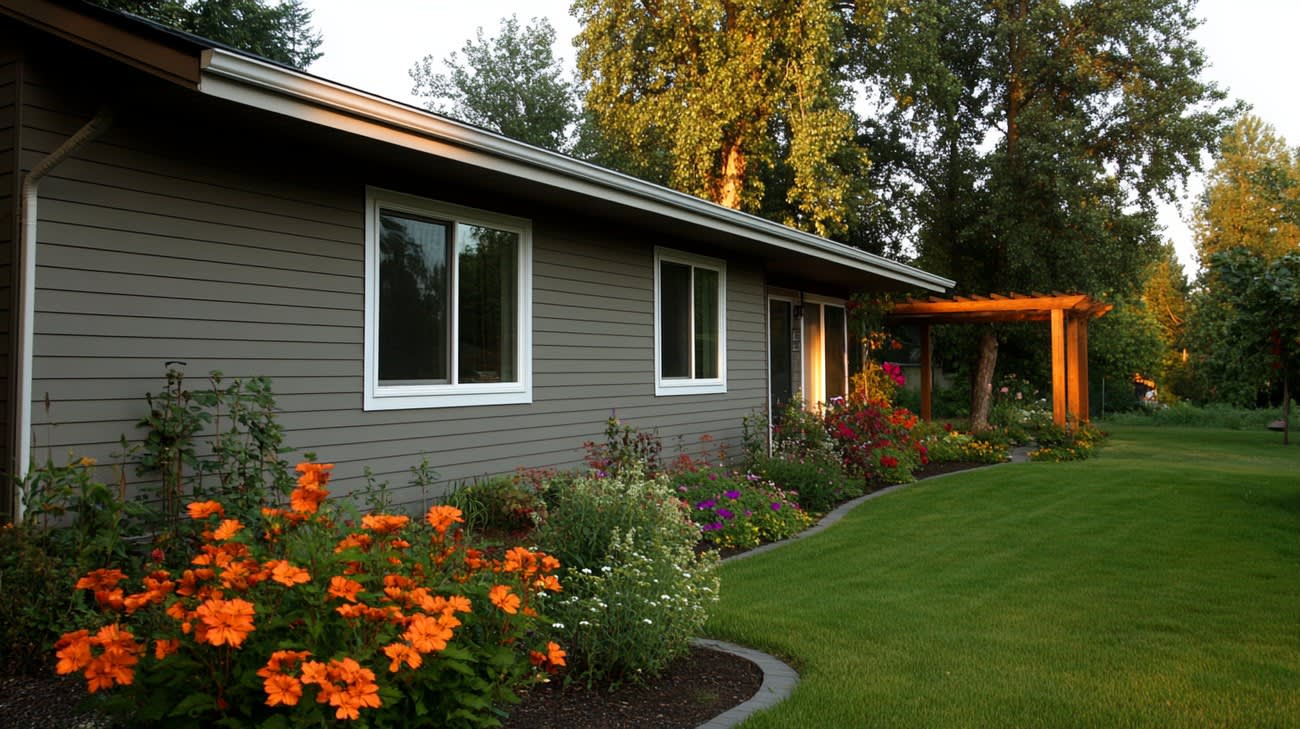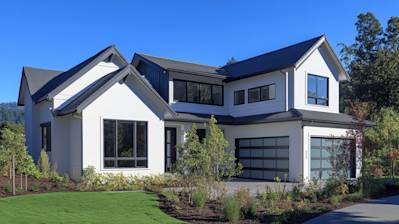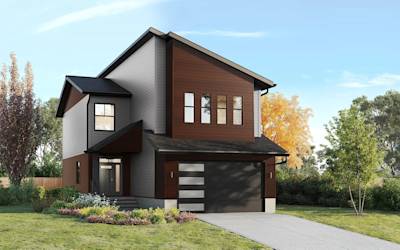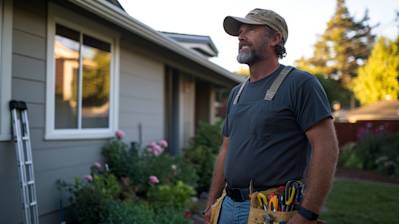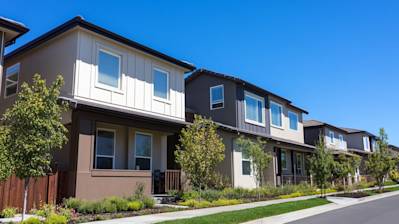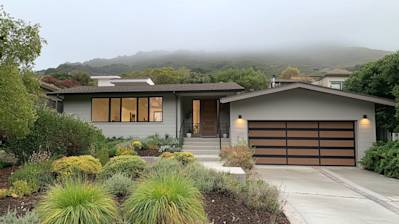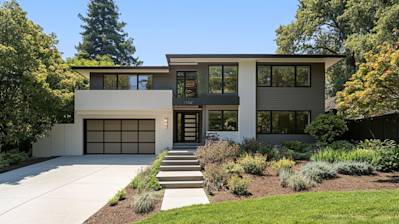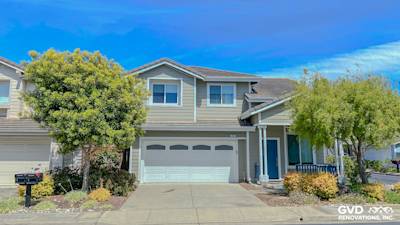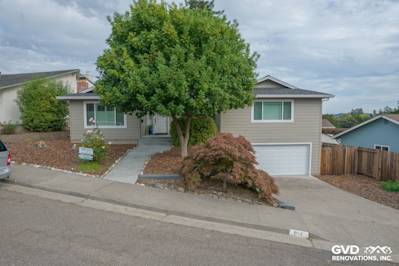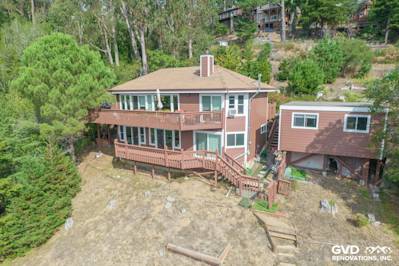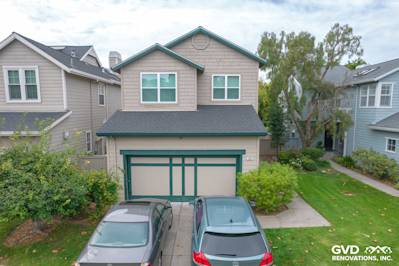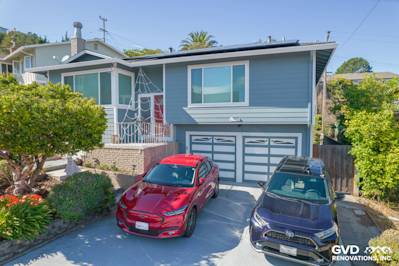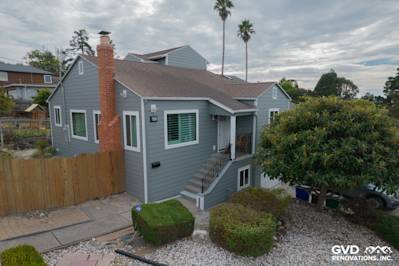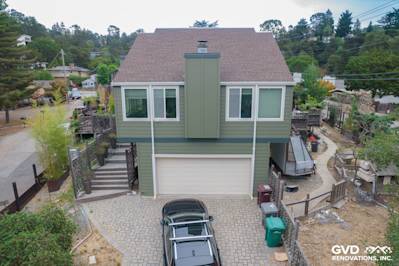Are you considering remodeling your home or building a new one? If so, choosing the right siding for your property might be at the forefront of your mind. After all, a home's siding does more than just add a pleasing aesthetic—it protects from the forces of nature. Among the numerous siding options available today, fiber cement siding shines with its prolonged lifespan and durability. This article delves deep into an exploration of the lifespan of fiber cement siding to equip you with the knowledge needed for your upcoming construction project.
What is Fiber Cement Siding?
Before diving into the lifespan of fiber cement siding, it's necessary to understand what it is. Fiber cement siding, a building material used to cover the exterior of buildings, is produced by combining wood pulp and Portland cement. This unique blend makes it one of the most resilient materials to date. Fiber cement's remarkable resilience has made it an increasingly popular choice among homeowners and builders alike.
Lifespan of Fiber Cement Siding
Determining the exact lifespan of fiber cement siding can be challenging as it largely depends on various factors such as the climate and how well a homeowner maintains it. That being said, fiber cement siding, generally speaking, has an average lifespan of around 50 years.
Effect of Climate
The climate plays a considerable role in the lifespan of fiber cement siding. In milder climatic conditions, fiber cement siding may last even longer than the stated 50 years. However, in harsher environments where weather changes are more drastic, the lifespan might be slightly reduced but will still far outlast its other siding counterparts.
Importance of Maintenance
Fiber cement siding has a low maintenance demand compared to other types such as wood. Primary maintenance activities include regular inspections, prompt rectification of any damage, and occasional cleanings. Ignoring these activities might result in a slight reduction in the lifespan of your siding.
Extended Lifetime Through Proper Installation
The longevity of fiber cement siding is also contingent on a correct and professional installation. Poor installation could provoke unnecessary damage and eventual early replacement. Hence, always seeking professionals for fiber cement sidings installation is beneficial for the following reasons:
- Proper sealing and caulking: Professionals ensure all sides, joints and openings are properly sealed and caulked to prevent damages from moisture penetration
- Proper nailing and fastening: Incorrect nailing can lead to cracking or bulging in the siding over time
- Understanding of expansion and contraction: Fiber cement siding expands and contracts with the climate. Proper installation takes this into consideration to avoid damage
The Durability of Fiber Cement Siding
The proportionate blend of cement and wood pulp gives fiber cement siding a resistance to several elements that would wear down other siding types. This resistance contributes positively to its overall lifespan.
Here are some of the features that make fiber cement siding durable:
- Fire Resistance: Unlike vinyl or wood, fiber cement siding is non-combustible and can withstand high temperatures
- Rot Resistance: The composition of fiber cement siding doesn't allow it to rot, unlike wood sidings that deteriorate over time
- Insect and Pest Resistance: Fiber cement sidings aren’t a suitable habitat for pests. Insects, including termites, do not eat through these sidings
- Damage from Salt: Salt is known to corrode material over time. However, fiber cement siding is resistant to salt, making it apt for homes in coastal regions.
The Winning Combination: Fiber Cement Siding Lifespan and Cost
While the upfront cost of fiber cement siding might be higher than some other siding options, its extended lifespan and minimal maintenance requirement arguably make it a smart investment. It offers a practically unbeatable combination of longevity, aesthetic appeal, and overall value. Whether you are building a new home or looking to upgrade your current siding, carefully consider fiber cement siding, as the benefits and longevity far outstrip the initial cost.
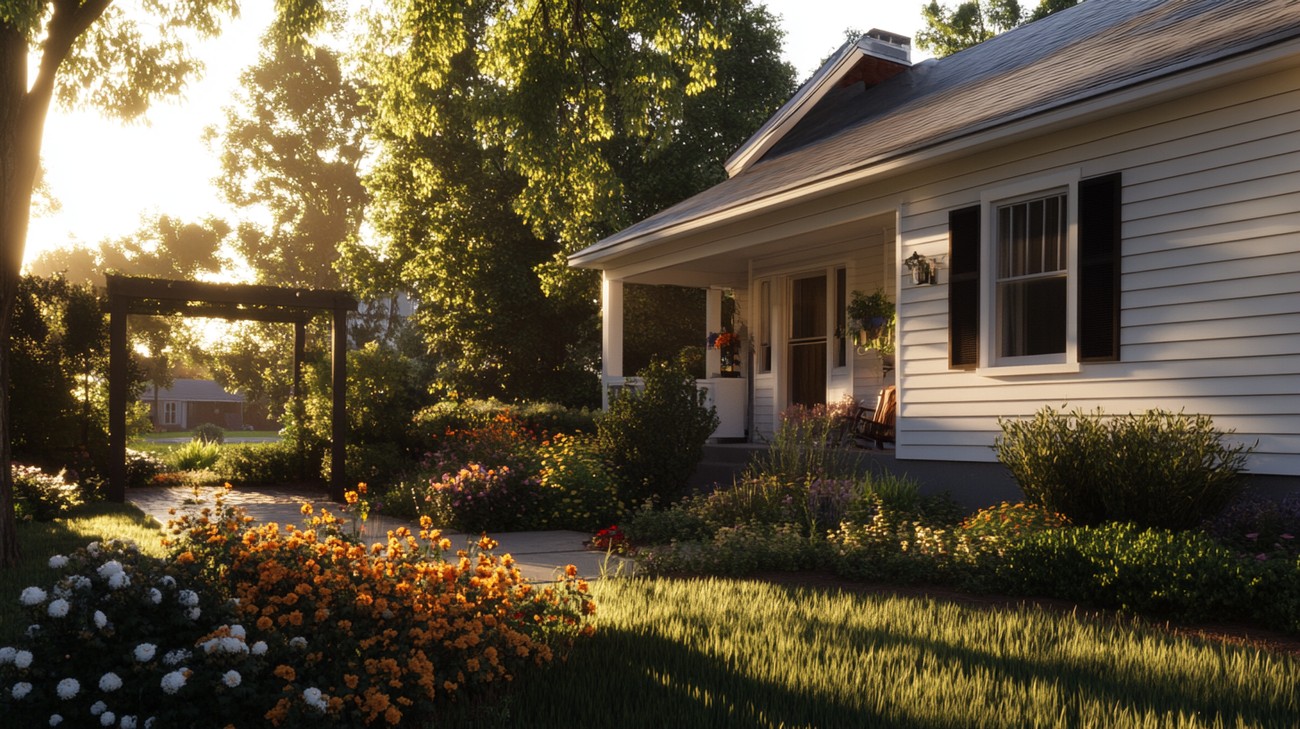
Frequently Asked Questions about Fiber Cement Siding Lifespan
How Long Can We Expect Fiber Cement Siding to Last?
Typically, fiber cement siding can last anywhere from 25 to 50 years, depending on the factors previously mentioned. It is widely praised for its durability and longevity compared to other types of siding materials, making it a popular choice among homeowners and builders.
Can Weather Conditions Affect Fiber Cement Siding Lifespan?
Absolutely, harsh weather conditions such as heavy snowfall, hail, and extreme temperatures can influence the lifespan of fiber cement siding. However, it's pertinent to note that fiber cement siding fares better against these conditions than vinyl or wood. Inspecting your siding regularly for any damage ensures you manage to extend its lifespan.
Does Paint Affect the Lifespan of Fiber Cement Siding?
Indeed, the type and quality of paint used on fiber cement siding significantly influence its lifespan. High-quality paint, properly applied, can protect the siding from harsh weather and other external damage. The good news about fiber cement siding is that it holds paint very well, allowing for longer intervals between repaint jobs, thereby extending the material's lifespan.
How Does Maintenance Influence the Lifespan of Fiber Cement Siding?
Maintenance is an important aspect that directly influences the lifespan of fiber cement siding. Regular inspection and timely repair can ensure that your siding lasts for the longest time possible. Cleaning the siding once or twice a year can minimize the build-up of dirt and grime which may cause degradation.
Does Improper Installation Affect the Lifespan of Fiber Cement Siding?
Just like the quality of the material affects the lifespan, so does the quality of the installation. Inadequate installation of the fiber cement siding can lead to susceptibility to damage. Having a professional install it for you guarantees that the siding is properly installed and, as a result, lasts longer.
Is it Possible to Enhance the Lifespan of Fiber Cement Siding?
Absolutely. Regular maintenance and timely repairs are the best ways to enhance the lifespan of fiber cement siding. Additionally, repainting every 10-15 years can ensure the siding remains protected from external factors.
Does Fiber Cement Siding Lifespan Vary With Brands?
Yes, it does. Different brands have different manufacturing processes and material quality standards which can influence the overall lifespan of fiber cement siding. It is always prudent to choose brands with a reputation for quality.
Can You Replace Parts of Fiber Cement Siding to Extend Its Lifespan?
Yes. One huge advantage of fiber cement siding is that if one part is damaged, you can simply replace that section without doing a complete overhaul. This ability to replace parts can significantly enhance the lifespan of your fiber cement siding.
What are Some Signs that Fiber Cement Siding Has Reached Its Lifespan?
Cracking, warping, and moisture infiltration are some obvious signs that your fiber cement siding has reached its lifespan. Additionally, persistent paint failure and a significant increase in your energy bills may suggest you may need to replace your siding.
Do Different Colors of Fiber Cement Siding Affect its Lifespan?
Dark colors tend to absorb more heat, which can put more strain on the siding if you live in a hot climate. Conversely, extremely light colors may require more frequent cleaning. A mid-tone color is generally the best compromise for longevity.

Pros of Fiber Cement Siding Lifespan
Highly Durable
Fiber cement siding is known for its exceptional durability. Used as a protective barrier for external walls, it can withstand various forms of wear and tear. This material does not easily crack, peel, or warp, even in difficult climate conditions. Its long-lasting nature could save homeowners from frequent siding replacements.
Less Maintenance
One of the most significant advantages of fiber cement siding is its low maintenance. This siding type, once installed, does not require constant repairs or upkeep, thus reducing the cost and stress of regular maintenance. Routine cleaning to prevent dirt accumulation or mold growth is usually sufficient to maintain its optimal condition.
Cost Effective
While fiber cement siding may require a substantial initial investment, its overall lifespan and minimal maintenance needs make it a cost-effective choice in the long term. It typically outlasts other siding materials like vinyl, wood, or aluminum, which may need more frequent replacements.
Resistant to Pest and Fire
Another pro to consider with fiber cement siding is its resistance to common problems like termites and fire. Termites can cause serious damage to houses, especially those with wood sidings. Fiber cement, on the other hand, does not attract pests and is resistant to flames. This makes it a safe and reliable option for homeowners.
Climate Compatibility
Fiber cement siding performs exceptionally well in different climate conditions. Whether exposed to extreme heat, cold, strong winds, or heavy rain, this material remains durable and sturdy. It won't contract or expand considerably with changes in temperature, reducing the likelihood of cracks or damage.
Cons of Fiber Cement Siding Lifespan
Initial Cost
While fiber cement siding’s lifespan may make it a cost-effective option over time, the initial costs of purchasing and installing it can be somewhat high. The material itself is expensive, and since it's heavy, professional installation is recommended, increasing the upfront costs.
Complicated Installation
As previously mentioned, the installation process for fiber cement siding is more challenging than other options. It can be a time-consuming process that might require professional expertise due to the siding's weight and unique installation needs. Improper installation could lead to decreased lifespan and other problems down the line.
Potential for Moisture Issues
Although fiber cement is resistant to many forms of damage, it can sometimes retain moisture which could lead to problems over time. If the siding isn’t correctly installed and sealed, any trapped moisture can cause the material to rot, which would significantly reduce the siding's lifespan.
Limited Insulation
Despite its many benefits, fiber cement siding doesn't provide as much insulation as other siding options. This might compromise the energy efficiency of your home, leading to higher heating and cooling costs. Homeowners may have to invest in additional insulation to offset the weaker insulation properties of fiber cement siding.
Color Fading
One common complaint about fiber cement siding is the fading of the color over time. While this doesn’t impact the siding's performance or durability, it may influence your home's overall appearance. Some homeowners might find the need for repainting or color touch-ups an inconvenience.

Myths / Misconceptions about Fiber Cement Siding Lifespan
Myth 1: Fiber Cement Siding Never Needs Replacing
Explanation
This is one of the most widespread myths out there about fiber cement siding. Its proponents argue that fiber cement siding will last forever, and never need to be replaced.
Correction
While fiber cement siding is indeed durable and long-lasting, it is not invincible. Nothing that is exposed to the elements, year in, year out, can be. Typically, fiber cement siding can last between 50 to 100 years, depending on factors such as the quality of installation, local weather conditions, and regular maintenance.
Myth 2: Fiber Cement Siding Requires No Maintenance
Explanation
HardiePlank, a popular brand of fiber cement siding, markets its products as "low maintenance". Many consumers interpret this as "no maintenance".
Correction
What "low-maintenance" really means is that fiber cement siding doesn't require frequent or heavy-duty maintenance. For instance, fiber cement siding does not need to be painted as often as wood siding, but it still needs to be repainted every 10-15 years or so, depending on the quality of the paint and the severity of the local weather. Similarly, while it's true that fiber cement siding is resistant to many threats that require frequent attention with other siding materials, such as insect damage or rotting, it is still susceptible to moisture damage if not properly installed or maintained.
Myth 3: Fiber Cement Siding Will Increase the Value of Your Home
Explanation
Many homeowners believe that installing fiber cement siding on their home will automatically increase its value. It's true that high-quality, well-maintained fiber cement siding can contribute to a better curb appeal and, consequently, can increase a home's resale value.
Correction
Unfortunately, the return on investment for fiber cement siding is not as high as some people might think. While fiber cement siding does often result in an increased home value, it's important to remember that there are many other factors at play in a home's overall value, including its location, the state of the real estate market and the interior condition of the house.
Myth 4: All Fiber Cement Siding Products are Created Equal
Explanation
Many homeowners think that all fiber cement siding products are of the same quality, and it doesn't matter which one they choose.
Correction
The truth is, there can be significant differences in quality between different fiber cement siding products. Some products are better suited for particular climates or architectural styles, some come pre-primed or pre-painted, and some are more durable or easier to install.
Myth 5: Fiber Cement Siding is Environmentally Unfriendly
Explanation
The manufacture of fiber cement siding involves the use of heat and energy, leading to the perception that this material is not environmentally friendly.
Correction
In actuality, fiber cement siding is typically more sustainable than many other siding options. Fiber cement is made primarily of cement and cellulose fibers - both abundant and renewable resources. Additionally, many manufacturers of fiber cement siding have made significant strides in reducing the environmental impact of their production processes.
Myth 6: Fiber Cement Siding never Cracks
Explanation
Many people believe that fiber cement siding is completely impermeable and never cracks.
Correction
While it's true that fiber cement siding is much more resilient than other materials like wood or vinyl, it is still prone to cracking under certain conditions. For instance, if the siding is not installed correctly, it can lead to stress cracks over time. However, as long as fiber cement siding is properly installed and maintained, it is unlikely for cracks to appear.
In conclusion, there are countless misconceptions surrounding the lifespan and characteristics of fiber cement siding. Before taking decision, homeowners should do proper research and not base their decision on hearsay or misconceptions.
Summary
Alright, let's wrap this up. Consider fiber cement siding lifespan into your house concepts - it's dang good! This material goes the extra mile, lasting between 50 to 100 years. Yeah, you heard that right. Imagine not having to fret about the exterior of your house for potentially a whole century!
So, you're probably thinking, "Is fiber cement siding lifespan worth it?". Absolutely yes! When it comes to durability, it's hard to beat. It's resistant to many common threats like termites, fire, and harsh weather.
In the end, while the initial costs may be higher, the fiber cement siding lifespan more than compensates for it. Great aesthetics, outstanding durability, and low maintenance. If you're planning for the long haul, it is hard to ignore the benefits this wondrous material provides. It's a lifetime investment, for sure.
About Bay Area Siding Company
At Bay Area Siding Company, we're more than just your typical siding contractor. Based in beautiful Bay Area, CA, we've been adding comfort, value, and style to homes for over a decade. Our team of experts specializes in installing top-quality, durable siding that not only enhances the attractiveness of your home but also protects it against the elements. We're all about delivering excellent craftsmanship paired with superior customer service. We treat each home as if it was our own and work to ensure every client is absolutely thrilled with our services. We're not just building siding, we're building relationships.

